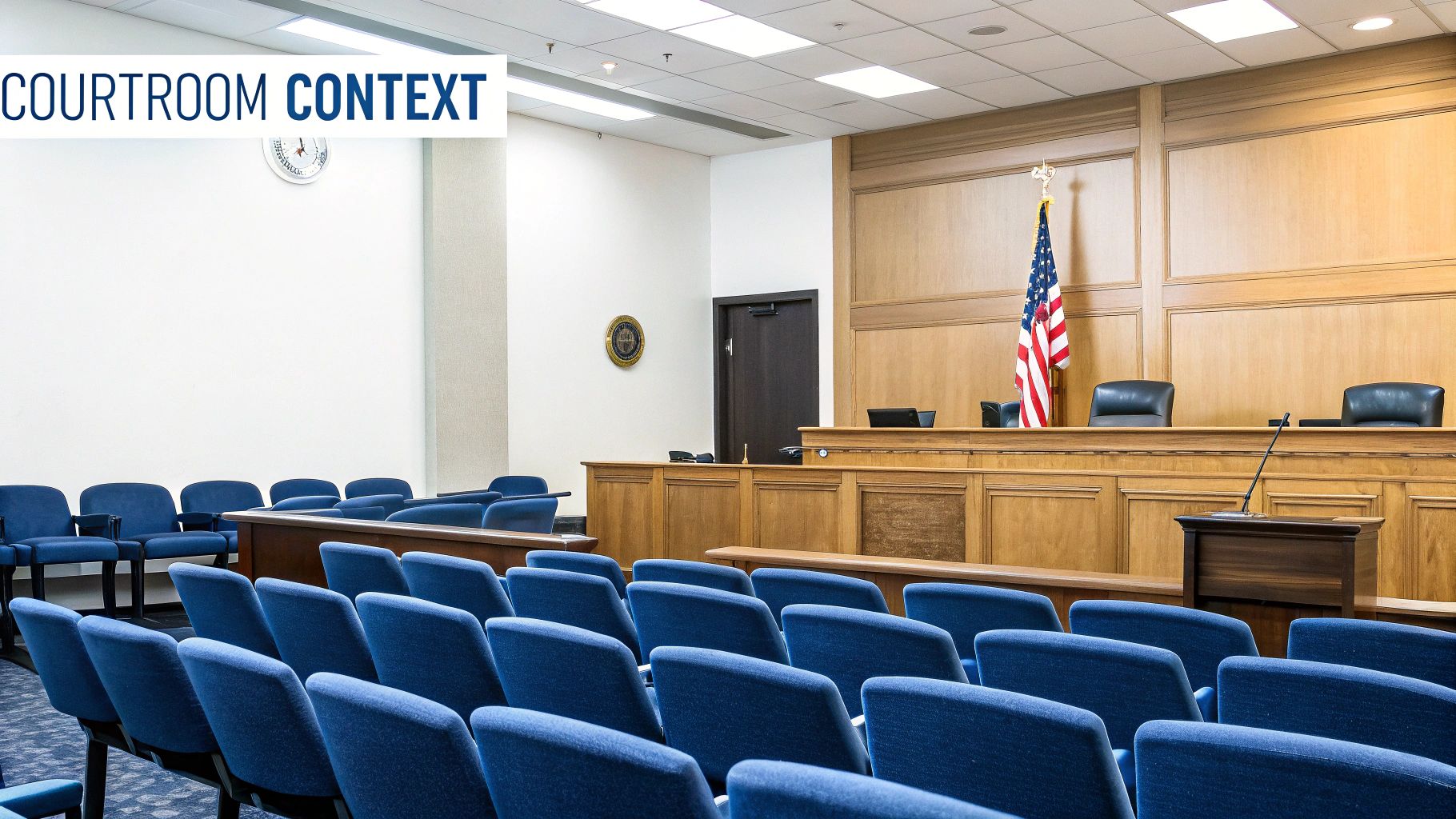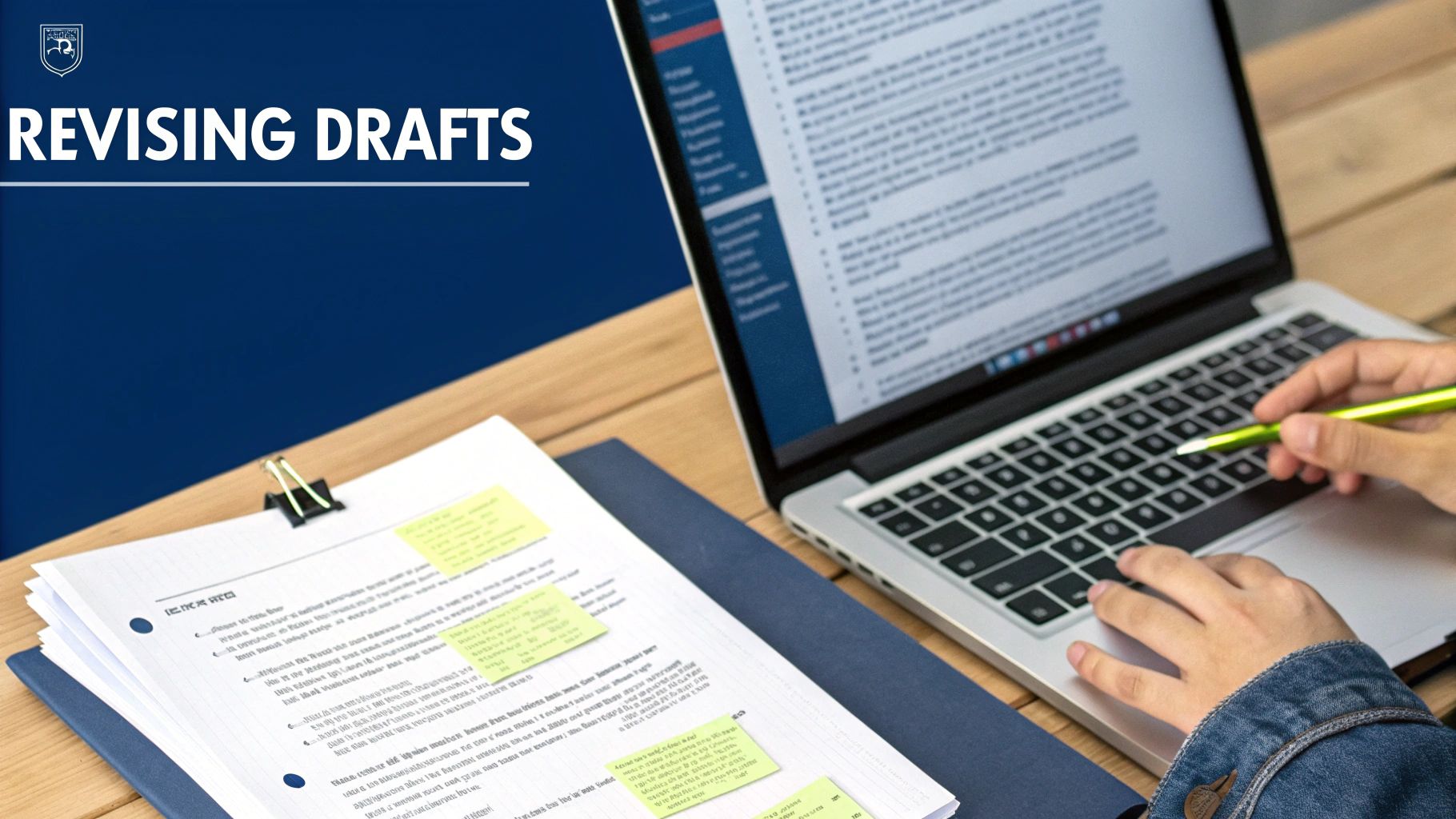How to Write Legal Briefs: Expert Strategies for Crafting Arguments That Win Cases
Understanding the Strategic Impact of Legal Briefs
A strong legal brief is often what makes or breaks a case. It's the main tool for communicating your legal position to the judge and shaping their understanding. An effective brief does more than just present facts - it carefully structures them to build a clear path to your desired outcome. This includes highlighting key evidence that supports your case while directly addressing potential weaknesses. The best briefs also anticipate and proactively counter opposing arguments before they're made.
Why Some Briefs Succeed While Others Fail
Success in brief writing depends on several critical factors. Clear, concise writing is essential since judges handle large caseloads and need to quickly grasp key points without wading through unnecessary jargon. The brief's structure also plays a vital role - using clear sections and headings helps judges follow your reasoning, especially for complex legal matters. Beyond technical elements, the ability to tell a compelling story with the facts often resonates with judges on a deeper level and can impact their decision-making.
Time Management and Key Elements in Brief Writing
Writing legal briefs is a major part of an attorney's workload, taking up 23% of their time on average according to recent studies. Learn more about legal brief writing trends. This makes effective time management crucial. Experienced attorneys focus their energy on the most impactful sections first - particularly the statement of facts and legal arguments. They also know thorough editing and proofreading are essential for a polished final product that will stand up to scrutiny.
Learning from Successful Briefs
Studying well-crafted briefs provides valuable lessons for improving your own writing skills. By examining how skilled attorneys build their arguments, support their positions with evidence, and handle opposing viewpoints, you can adopt proven techniques in your practice. Pay attention to elements like strong opening statements, clear issue presentation, and persuasive conclusions. Understanding how specific courts and judges evaluate written submissions helps you customize your approach. This might include adjusting your writing style or emphasizing certain precedents that align with the court's previous decisions.
Crafting a Compelling Statement of Facts

The statement of facts is more than just listing what happened - it's where you begin persuading the judge to understand your client's point of view. This key section combines careful fact selection with clear storytelling while maintaining strict accuracy and credibility.
Selecting and Organizing Key Facts
Start by choosing facts that directly support your legal arguments. For example, in a contract breach case, focus on specific actions that demonstrate the breach. Skip details that don't advance your position. Think of building your argument like constructing a house - each fact should strengthen the overall structure.
The order of facts matters just as much as which ones you include. While chronological order often works well, sometimes grouping facts by theme makes more sense. Thematic organization can reveal patterns of behavior or show how multiple related events led to the current dispute.
Presenting Facts Persuasively
Use clear language and avoid legal jargon when possible. Write in active voice to emphasize key actions. Instead of "The contract was breached by the defendant," write "The defendant breached the contract." Include specific details that help the judge visualize what occurred.
Building credibility is essential. Every fact must have supporting evidence - whether testimony, documents, or other admissible proof. Legal writing experts note that judges are often more swayed by fairness and common sense than complex legal analysis. Learn more about effective legal writing.
Addressing Adverse Facts and Procedural History
Most cases have unfavorable facts that can't be ignored. Address these directly while explaining their limited impact or providing context that supports your position. This shows honesty while allowing you to frame challenging information appropriately.
Include key procedural details like prior rulings and motions. A clear procedural history helps judges understand how the case reached its current status. By mastering these techniques, you can create a statement of facts that tells a compelling story while maintaining strict accuracy.
Maximizing Brief Impact Through Clear Writing

Once you have written a strong statement of facts, the next key step in creating an effective legal brief is making your writing clear and accessible. Even thoroughly researched arguments can fall flat if they get lost in dense legal jargon. Here's how to balance sophisticated legal analysis with writing that resonates with judges.
Eliminating Unnecessary Complexity
Judges need writing that gets straight to the point. With many briefs to review and limited time, clear and direct language is essential. Skip convoluted sentences and excessive legal terminology. Think about explaining your points to someone outside the legal field - use plain English where possible. For instance, write "under this law" rather than "pursuant to the aforementioned statute." This improves understanding without losing precision.
Structuring Arguments for Maximum Impact
A well-organized argument guides the judge smoothly through your reasoning. Break complex ideas into digestible sections with clear headings. Lead with your strongest points to grab attention early. Use connecting words like "therefore" and "however" to show how your arguments flow together logically. Research shows that readability directly impacts case outcomes in federal courts. According to this study on brief writing and summary judgment success, briefs with higher readability scores tend to be more successful.
Formatting for Enhanced Readability
Smart formatting makes your brief easier to absorb. Use bullet points or numbered lists for related items. Apply bold text sparingly to highlight key points, but avoid overuse. Include adequate white space with shorter paragraphs and proper margins. When a brief looks approachable on the page, judges can better focus on understanding and remembering your arguments.
Crafting Powerful Introductions and Conclusions
Your introduction and conclusion deserve special attention as they frame your entire brief. The opening should clearly present the issue, your position, and what you're asking the court to do. Make it engaging while setting up your key arguments. The conclusion needs to reinforce your main points and restate the outcome you seek. These sections give you crucial opportunities to persuade the judge and leave a lasting impression. Taking time to polish them is essential for maximizing your brief's effectiveness.
Developing Your Brief Filing Strategy
A strong legal brief needs an equally strong filing strategy to maximize its impact. Having a clear plan for how and when you file your briefs is just as crucial as the content itself. This includes carefully considering submission timing, managing multiple brief filings, and effectively using amicus support.
Coordinating Multiple Briefs
Cases often involve several briefs - including responses, replies, and cross-claims. These documents need to work together effectively to present a clear, compelling narrative. When working with co-counsel, careful planning ensures each brief builds upon previous ones while addressing new arguments. The key is maintaining consistency while advancing your overall position.
Leveraging Amicus Support
Amicus briefs from third parties can significantly impact court decisions by providing additional perspectives and research. Support from respected organizations or experts can strengthen your arguments substantially. However, quality matters - poorly written or irrelevant amicus briefs can weaken your position by diluting your core message. Be selective about which amicus briefs you pursue.
Timing Your Submissions
When you file can be as important as what you file. Early filing lets you frame the debate but gives opponents more response time. Later filing allows direct responses to opposition arguments but may limit court review time. Consider your specific case circumstances when planning submission timing. Research shows timing can affect outcomes - see more at Research on brief filings. Studies indicate that parties filing more briefs often have higher success rates in certain courts.
Building a Winning Strategy
An effective brief filing strategy requires anticipating opposing arguments and planning responses proactively. Map out your approach like a chess game - think several moves ahead. By developing a clear narrative across multiple filings and using supporting materials strategically, you can build a more persuasive case. This kind of thorough preparation significantly improves your odds of success.
Mastering Legal Research and Citation Practices

Strong legal briefs require precise and thorough research. Finding relevant authorities to support your arguments is essential for building a compelling case. Let's explore the key aspects of effective legal research and proper citation practices.
Research Tools and Resources
Legal research goes beyond basic searches. Major legal databases like Westlaw, LexisNexis, and Bloomberg Law offer advanced features for filtering results and tracking legal developments. Using Boolean operators helps refine searches to find exactly what you need. Tools like Shepard's and KeyCite are vital for checking if cases remain good law.
Organizing Legal Material
Managing large amounts of legal information requires a structured approach. Create detailed research logs and organize cases by topic. Use a clear system for tracking statutes, regulations, and secondary sources. Good organization helps you quickly locate specific information during the writing process without wasting time searching through materials again.
Identifying Strong Authorities
Not all legal sources carry equal weight in briefs. Consider key factors when selecting authorities:
- Court hierarchy and jurisdiction
- How recent the decision is
- Whether the case directly addresses your issue
- The reasoning quality and judge's reputation
Research File Management
Keep detailed records of your research process. Note important elements like:
- Search terms used
- Case summaries
- Specific page citations
- Key quotes and holdings
Think of your research file as a map of your legal argument. Careful documentation helps you verify information and update briefs efficiently.
Citations and Argument Building
Accurate citations form the foundation of credible legal writing. Always verify citations before submitting briefs to avoid misrepresenting cases. Focus on weaving research into a clear narrative that supports your position. Explain how each authority connects to your arguments while addressing potential counterpoints. Strong citation practices combined with clear analysis make briefs more compelling and increase their chances of success.
Perfecting Your Brief Through Strategic Review

The final stage in creating an excellent legal brief involves careful and systematic review. This step is essential for turning a solid draft into a clear, persuasive document. Think of it as your final quality check before presenting your case.
Comprehensive Review Protocols
Leading law firms use structured review methods to ensure quality. Key elements include peer reviews from colleagues who evaluate clarity and persuasiveness, along with quality control checklists to maintain consistency. The review process focuses on refining arguments, improving language clarity, and enhancing the document's flow.
Objective Evaluation and Feedback Incorporation
When reviewing your work, try to read it as a judge would. Ask yourself: Are the main arguments clear? Is the writing precise? Does the structure make sense? Welcome feedback from others and use it to improve your brief. Every perspective can offer valuable insights, even for experienced attorneys.
Identifying Weak Points and Strengthening Citations
Take time to spot potential gaps in your reasoning. Check your citations carefully - do they properly support your arguments? Are there stronger authorities you could cite? Remember that weak support can damage an otherwise strong position.
Practical Tools and Templates
A systematic approach helps make reviews more effective. Use checklists to verify all key elements, from citation format to overall structure. Peer review forms help organize feedback in a consistent way. These tools help create briefs that meet high professional standards and present stronger arguments.
Efficient Review Management
Make the most of your review time by setting clear deadlines for each stage. Use collaboration tools to track changes and comments. Focus first on feedback that will have the biggest impact on your brief's effectiveness.
The review stage is crucial for creating a winning legal brief. By giving this phase the attention it deserves, you can significantly improve your document's impact and increase your chances of success in court.
Whisperit, an AI dictation and editing platform, can help you create polished legal documents more quickly. Learn more about how Whisperit can help with your legal writing.